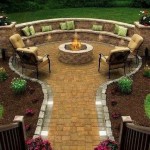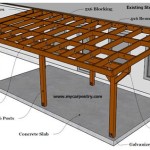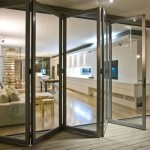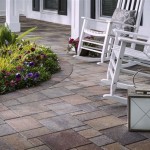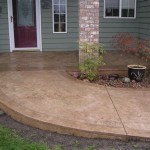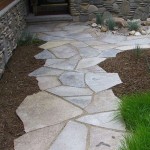Achieving Maximum Privacy with Outdoor Screens for Patios
Outdoor living spaces, particularly patios, offer an extension of indoor comfort and enjoyment into the open air. However, achieving maximum privacy within these spaces can be a challenge. While fencing serves as a traditional solution, it can sometimes appear imposing and detract from the aesthetic appeal of a patio. Outdoor screens offer a compelling alternative, providing a harmonious balance between visual privacy and an open, airy ambiance. These versatile structures act as a stylish and functional barrier, allowing homeowners to create intimate and secluded outdoor retreats.
Choosing the Right Screen Material: A Balancing Act
The choice of screen material is crucial for maximizing privacy. Each material possesses distinct characteristics that influence both visual obstruction and aesthetic appeal. Popular options include:
- Vinyl Screens: Affordability and durability make vinyl screens a popular choice. They are easy to maintain, resist moisture and fading, and come in a variety of colors and designs. Vinyl's solid construction effectively blocks views, providing a high level of privacy.
- Aluminum Screens: Offering a contemporary look, aluminum screens are strong, lightweight, and resistant to rust. They are available in various finishes and can be custom-designed to fit specific needs. Aluminum screens provide a balance between privacy and visual openness, allowing for some light and airflow to pass through.
- Wood Screens: Warmth and natural beauty are inherent qualities of wood screens. They offer a classic aesthetic and can be stained or painted to complement existing patio decor. The level of privacy provided depends on the design, as wood slats or panels can be spaced for varying degrees of visual obstruction.
- Bamboo Screens: A popular choice for a more organic and tropical feel, bamboo screens are eco-friendly, lightweight, and highly versatile. They offer a unique visual appeal and provide good privacy. Bamboo screens are often used for creating a more zen-like atmosphere in outdoor spaces.
The ideal material depends on the specific needs and preferences of the homeowner. Consider factors such as desired level of privacy, aesthetic preferences, local climate, and budget when making a decision.
Screen Design: Achieving Optimal Privacy
Beyond material selection, screen design plays a significant role in achieving maximum privacy. Different design elements influence the level of visual obstruction and the overall appearance. Key design considerations include:
- Height: The height of the screen directly impacts the level of privacy provided. Taller screens offer greater visual obstruction, effectively blocking views from neighboring properties or street traffic. Standard screen heights range from 6 to 8 feet, but custom heights can be achieved to suit specific needs.
- Spacing: The spacing between screen panels or slats affects the level of visual openness. Closely spaced panels offer greater privacy, while wider spacing allows for more airflow and visibility. Choosing the right spacing depends on the desired balance between privacy and openness.
- Orientation: The orientation of the screen relative to the patio can impact privacy. Screens positioned parallel to the patio offer maximum visual obstruction, particularly if they run along the property line. Screens placed perpendicular to the patio may allow for some visibility from certain angles.
- Solid vs. Lattice: Solid screens provide the highest level of privacy by completely blocking views. Lattice screens offer a more open and airy feel while still providing a degree of visual obstruction. The choice between solid and lattice depends on desired privacy preferences.
Careful consideration of these design elements is essential to achieve the optimal level of privacy and maintain a harmonious aesthetic for the patio.
Enhancing Patio Privacy with Additional Strategies
Outdoor screens are a primary tool for achieving privacy, but other strategic additions can further enhance a patio's seclusion. These include:
- Planting: Strategic placement of tall shrubs, hedges, or trees can create natural barriers that block views and add a touch of greenery to the patio. Choose plants that thrive in the local climate and provide year-round coverage.
- Pergolas and Arbors: These structures can be adorned with climbing vines or flowers, creating a lush and intimate setting. They offer a natural and aesthetically pleasing way to create privacy and add shade to the patio.
- Curtains and Fabric: Drapes or curtains can be hung from the patio roof or pergola, providing a flexible solution for privacy and sunshade. Choose fabrics that complement the overall decor and offer UV protection.
- Lighting: Strategic lighting can enhance privacy by directing light inwards toward the patio, making it more difficult to see in from the outside. Use a combination of ambient and task lighting to create a warm and inviting atmosphere.
By incorporating these additional elements, homeowners can create a truly private and inviting outdoor sanctuary that provides a tranquil retreat from the outside world.

Screens The Most Cost Effective Way To Gain Privacy Conceal Eyesores Seattle Times

How To Add A Retractable Privacy Screen Your Outdoor Space

21 Deck Privacy Ideas For An Intimate Outdoor Oasis In 2024

7 Great Ideas For Using Decorative Outdoor Screens Home Beautiful

Screens The Most Cost Effective Way To Gain Privacy Conceal Eyesores Seattle Times

13 Attractive Ways To Add Diy Privacy Screen Your Yard Deck

How To Add A Retractable Privacy Screen Your Outdoor Space

18 Deck Privacy Ideas For Quiet Comfort Timbertech

Outdoor Privacy Screens At Com

Outdoor Privacy Screens At Com
Related Posts

